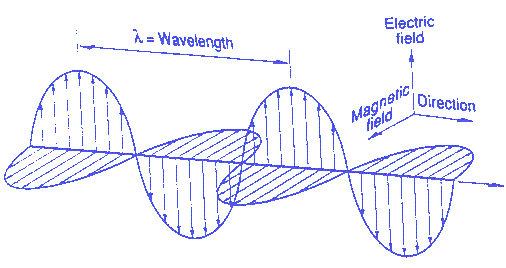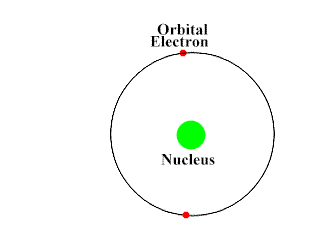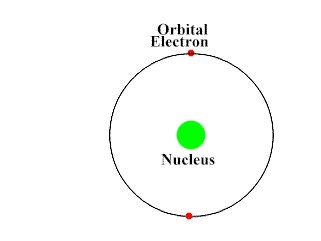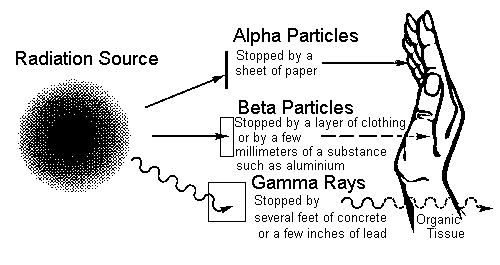Gamma Rays and X-Rays


Gamma and X rays differ only in their origin. Both are
electromagnetic radiation, and differ from radio waves and visible light in that
they have much shorter wavelength or higher frequency thus higher energy.
They are created when a nucleus has excess energy (this sometimes occurs after
decay of an alpha or beta particle or other nuclear transformations) or when
light, charged particles, such as betas and electrons, decelerate or change
energy states. While alpha particles and beta particles have a finite
maximum range and can therefore be completely stopped with a sufficient
thickness of absorber, photons interact in a probabilistic manner. This
means that an individual photon has no definite maximum range. However,
the total fraction of photons passing through an absorber decreases
exponentially with the thickness of the absorber.
There are three major mechanisms by which gamma and x-rays
interact with matter: Photoelectric effect; Compton scattering; and pair
production. The gamma and x-ray radiation that is produced at Ames is
almost exclusively of energies that will interact by the photoelectric effect or
Compton scattering. Gamma and x-ray radiation deposits its energy over
longer distances than beta or alpha radiation. Therefore, gamma and x-ray
radiation can penetrate both clothing and skin to deposit their energy into the
body. This energy interacts with matter in three principle methods as
described below.

Photoelectric Effect
The photoelectric effect occurs when the electromagnetic
radiation or photons impart all their energy to an orbital electron. The
photon simply vanishes, and if the energy of the photon is greater than 0.339
MeV, an electron may be ejected from the atom producing an ion pair. The
ejected electron will then produce secondary ionization events with its
surrounding atoms in a similar manner to beta particles. The photoelectric
effect has the highest probability with lower energy photons and atoms having a
high atomic numbers.

Photoelectric Effect

Compton Scattering
When only a portion of the electromagnetic radiation (photon
energy) is transferred to an electron an ion pair is produced and a less
energetic photon continues in an alternate direction. This photon then
continues on to interact with other electrons until its energy is depleted and
the electron produces secondary ionization events. Compton scattering
causes a change in direction of the photons and may appear to bend around
corners making shields less effective.

Compton Scattering

Pair Production
A photon passing through an atom in the region of
the nucleus may undergo a conversion to a positively charge positron and an
negatively charged electron. Using the formula to convert energy into
mass E = mc2 the rest mass of an electron or positron would equal 0.511
MeV. Therefore gamma photons of greater than 1.02 MeV are required for
pair production. Any excess energy above 1.02 MeV will be imparted to the
particles as kinetic energy.
The electron will interact with the surrounding atoms
producing secondary ionizations in a manner similar to beta minus
particles. The positron will eventually encounter a free electron, these
two particles will annihilate each other, converting their mass directly into
energy. Two photons are produced each of 0.511 MeV. The ultimate
fate of these two photons is energy loss by Compton scattering or the
photoelectric effect.

Pair Production


Protection
The main concern for gamma and x-ray radiation is
external exposure. Therefore, proper use of shielding, minimizing time
spent in the radiation field, and maximizing the distance from the source will
be the radioactive material user's or spill responder's main defenses. The
shielding of choice for gamma rays and x-rays is lead, due to its high Z number
and density. Other, less effective, shields are steel, concrete, or earth.





![]()
![]()

![]()

![]()

![]()
